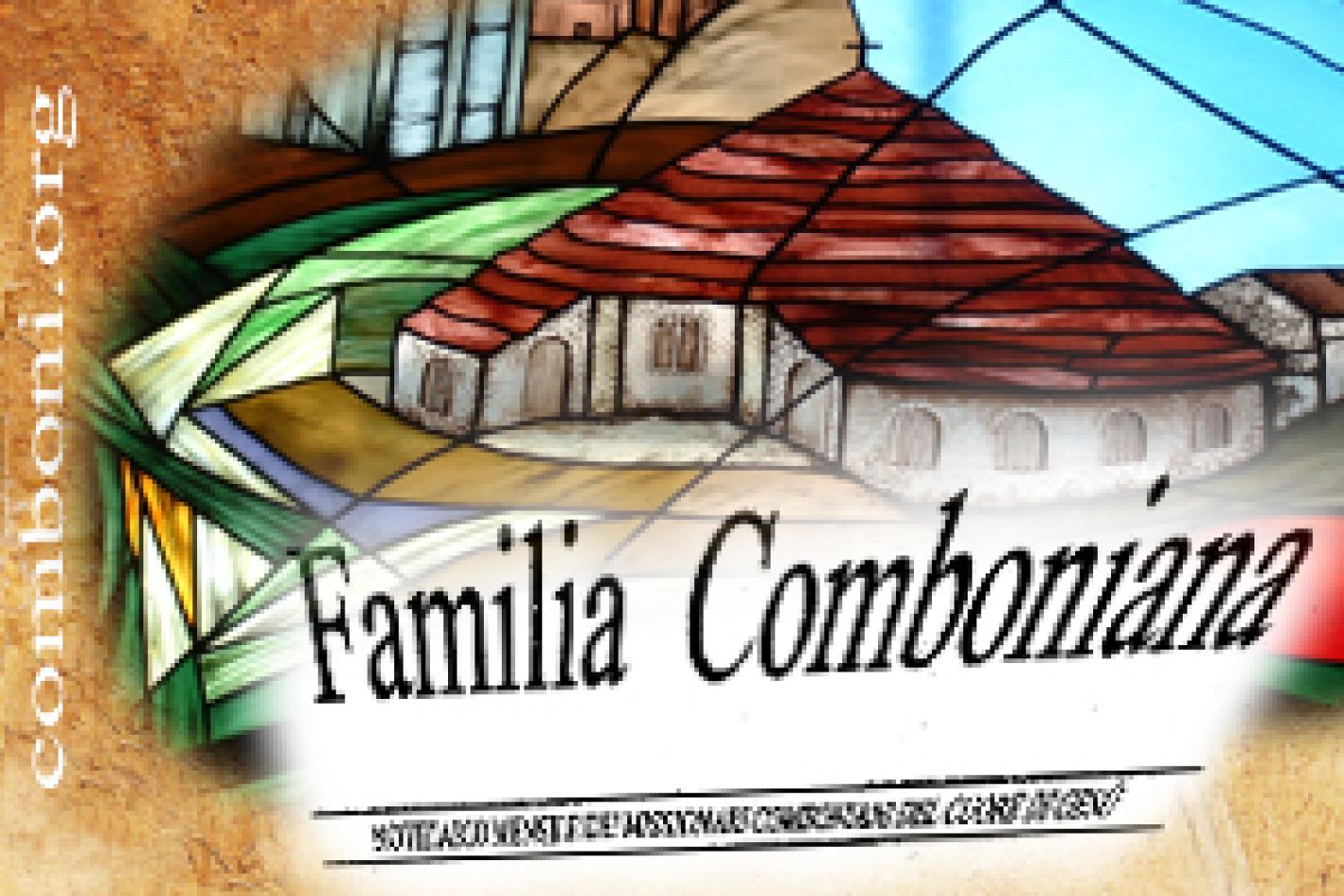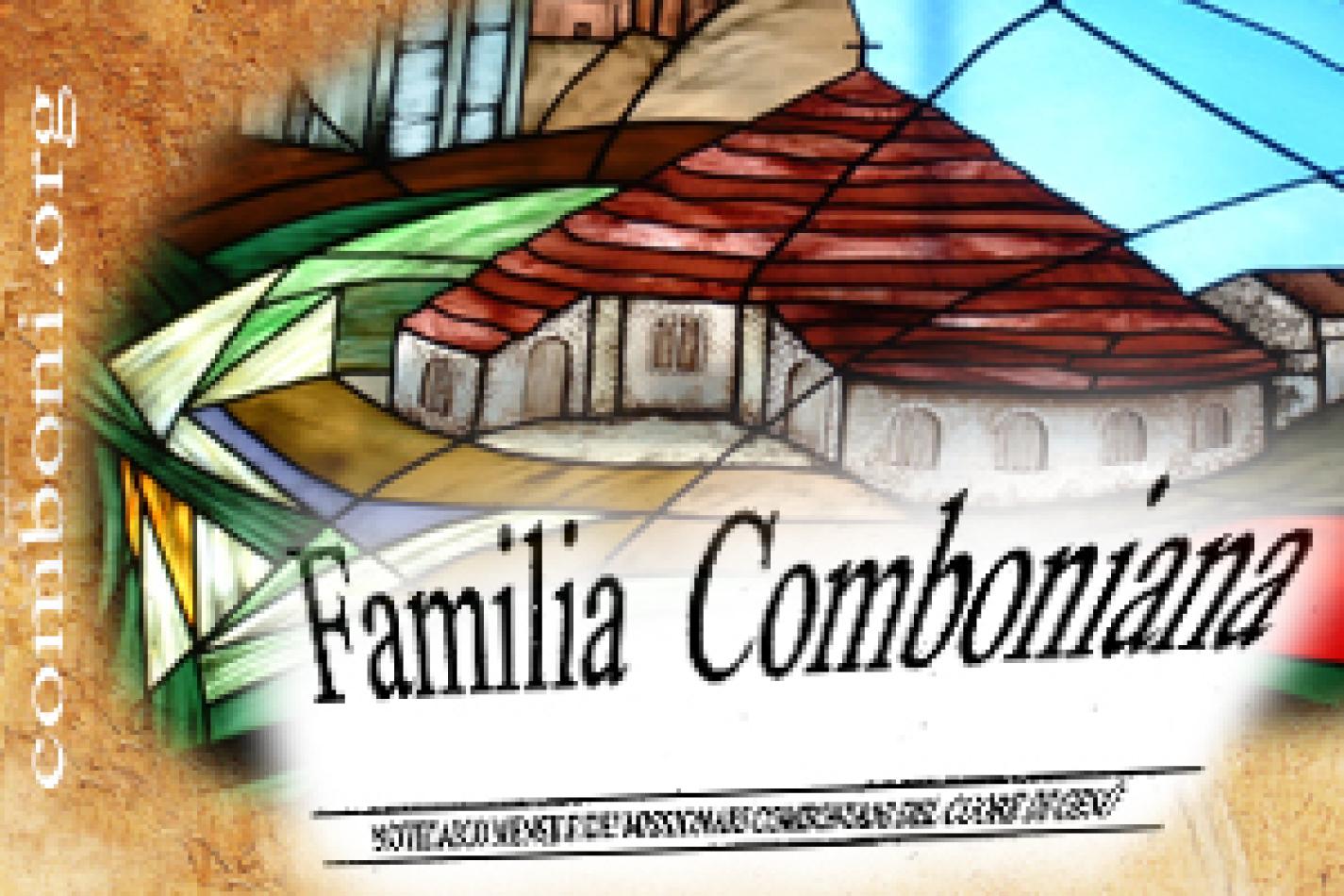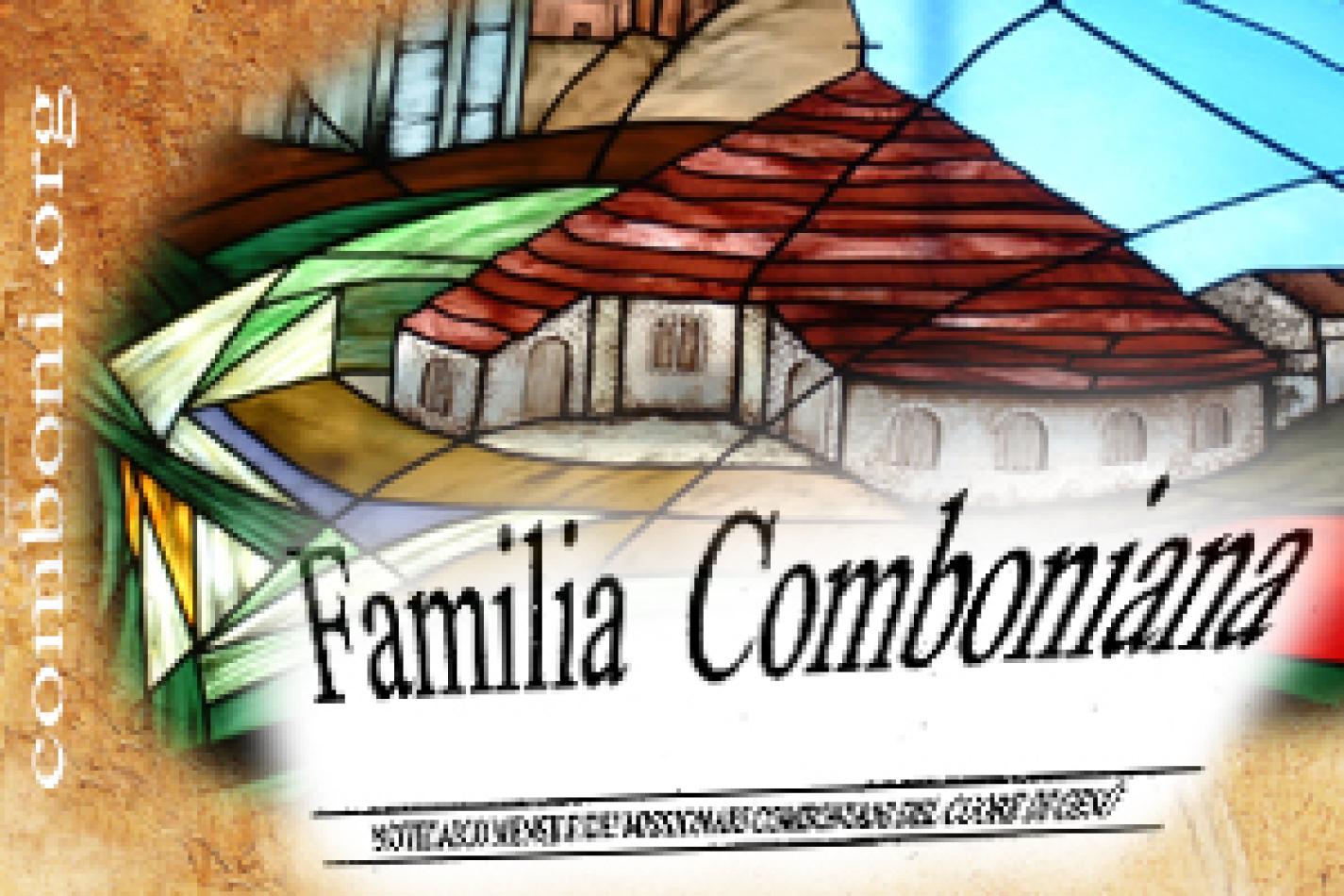Daniel Comboni
Comboni Missionaries
Institutional area
Other links
Newsletter
Introduction
For a missionary Institute, its spirituality is certainly one of the guarantees of the common faithfulness to the missionary call. And surely any authentic missionary spirituality is rooted in the Word of God. It echoes an encounter with the divine revelation as presented in the Scriptures and in History. But it also presents a deep element of human insertion, a ‘personal incarnation’ in a concrete reality with real assimilation of the religious values of the people. A true missionary spirituality consists therefore in a total immersion in the Word of God and in being open and responsive to concrete human reality. Such spirituality flows out as a strong attachment to God and a love for the people, carrying them in one’s heart, cherishing the beauty of their cultures, nursing their wounds, and believing in their future.
- The God whom Comboni met as a young man and as an active missionary in the deep missions of Central Africa revealed Himself as a merciful, compassionate “Good Shepherd”,
- Who allows “His Heart” to be pierced for our salvation.
- In his missionary service, Comboni learned to give God the right to make him walk the royal way of the “Cross”.
These are the three distinctive Biblical images that characterize our spirituality.
Talking of these images, the Chapter Acts of 2009 remind us that “as Comboni Missionaries we discover in the mystery of the Heart of the Good Shepherd the reason that animates us to total self-giving and pushes us towards the poor and abandoned” (20). “The total self-giving that requires us to take on very difficult situations is symbolized by the cross” (21).
The Good Shepherd
The idea that God was the shepherd of his people was dear among the Jews of the ancient times but the theme was present also in the first Christian communities. This theological concept was developed from the concrete social experience of the people and it shaped the understanding of the religious and political leadership. A quick look at this metaphor reveals that it still remains a challenge for every missionary today.
Socially, nomadism was predominantly the life style of the people. Even among the neighbouring states, where a certain level of a sedentary form of life had been reached, a considerable portion of the population still led a nomadic life. This consisted in frequent movement of people and animals in search of pastures and water points. In such a society it was highly probable that the image of a shepherd would easily influence the thinking of the people. In the harsh climatic conditions of the desert, the head of the flock had to have a good knowledge of the geographical location of the pastures and water points in different moments of the year. For the shepherd this meant a strong sense of orientation in the vastness of the desert where everything seems to look the same, with apparently very few points of reference. He had to know well the right paths and routes that would assure the survival of his flock and family.
To have the attribution of a good shepherd in such a society was actually an honour, respect and appreciation. Qualities of such a good shepherd were well outlined. He was the one who provided nourishment and refreshment for the flock. For domestic animals that are prone to wandering and unable to find their way unless helped, a good shepherd was the one who knew well the way and led in the front, providing direction. A good shepherd was knowledgeable and could easily avoid places in the wilderness which harboured raiders and wild animals. He had to be a courageous person who could stand up to provide safety and security for his flock in case of attack. Wandering in the desert could be tiring and energy consuming for animals. A good shepherd had therefore to be patient, especially with weakling young animals and those in gestation.
Given the meagre resources in the desert, a good shepherd had to help his own biological family not to put deep roots in one particular locality, which would lead to self-destruction and the compromising of the quality of the flock. Therefore the typical human structure for settlement was a tent, easily pitched and equally easily pulled down. This meant detachment from material things associated with sedentary population.
In such an environment, it becomes quite clear why it was easy for the people to conceive anthropomorphically their God with the attributes of a good shepherd under whose guidance one would have no worry at all, because “the Lord is my Shepherd, there is nothing I shall want” (Ps 23:1).
This was one of the greatest efforts of the religious leaders of the time to speak to the people in a language that would be understood. Like a good shepherd, God also dwells among His people in a temporary dwelling, the Tent of the Sanctuary. The desert becomes a privileged place where the people learn how to depend on God and on one another for survival. In the desert they encounter a God who provides and leads them from slavery into freedom and a new land. In this wilderness, God the Good Shepherd gets involved in the joys and struggles of his people. The success of the people no longer depends on their cleverness or astuteness but on the fact that God cares for them. Authority over His people as a Good Shepherd is founded on His fondness, commitment and love for the people.
The image of a good shepherd was applied also to the political leaders. Israel was a buffer state and an easy prey for the three military might often at war with each other: Egypt, Assyria and Persia. People needed a political leader who would assure them protection and national autonomy. The deceptions of the people under their own leaders, with a series of political instabilities due to internal and external factors, led them to develop a deep hope of a future Shepherd-Messiah who would restore a God fearing political leadership in the country and freedom from foreign domination and oppression.
In short, the image of the Good Shepherd is surely a deeply missionary theme and certainly one of the Biblical signs of a well thought attempt of inculturation of the message of hope, encouragement and salvation through a language relevant to the people.
The Cross
The Cross in Comboni had a special place in his spiritual journey till the last minute of his life. The Cross was for him an integral part of the Mission. His life and writing reveal a deep understanding of the salvific value of the passion of Christ. His ‘spousal’ relationship with the Cross was strictly tied to his faithfulness to his missionary commitment, a life lived at the service of others. This reveals a clear understanding that the paschal mystery had in the ministry of Christ.
The passion of Christ is first a story of Jesus’ fidelity to the mission received and his firm commitment to the will of the Father who sent him. ‘My Father,' he said, 'if it is possible, let this cup pass me by. Nevertheless, let it be as you, not I, would have it” (Mt 26:39). Through the passion stories, we learn that Jesus is one with the Father not only in life but also in death. His words on the Cross “Father, into your hands I commit my spirit” (Lk 23:46) express the intimate union between him and the Father even in what humanly speaking is the most tragic moment of his life and death. He preserved his communion with the Father till the end!
The passion or the Cross is also the story of the faithfulness of God the Father. This is wonderfully manifested by the first evangelist. Matthew begins his Gospel with the long list of the ancestors of Jesus. But in this list there is something that we always take lightly and yet it helps a lot in shading light into the meaning and the beauty of the passion and the Cross in the life of every faithful. In that passage of the genealogy of Jesus, we have four times the mention of the sad period of the exile in Babylon, a painful and unforgettable experience. This period of the Babylonian captivity remained for the people of Israel as one of the moments of their discontinuity as a nation and as a people. But it also marked in their history one of the most beautiful moments of the presence of the guiding hand of God in their lives. Likewise, for a missionary, and indeed for every believer, the Cross which apparently seems to be a defeat, a scandal as St. Paul says (1 Cor 1:23), an end, a total discontinuity of the mission, becomes an opportunity for a new and an astounding life. A moment for a deeper understanding of what really Jesus was: “In truth this man was the Son of God” (Mk 15:39). For Comboni, the Cross was an opportunity to recognize the saving presence of God in his work, the divine closeness even in the darkest moments of his ministry; a moment for a new beginning, a readiness to offer a thousands lives for the mission.
The Cross has also to be seen in the whole context of Jesus’ mission which had been a drama of the struggle against the powers of evil, with the eventual victory of divine goodness. This is manifested all along in the Gospels by the stories of healing, exorcisms, forgiveness of sins, the raising of the dead back to life, the feeding of the hungry. This points out to the reality of the mission for all times and ages, i.e., the Cross is an inevitable consequence of the mission. And this reminds us of the conviction of Comboni who, after years of hard work and difficult relationships in the mission, could confidently acknowledge that the great works of God are born and grow at the foot of the Cross.
It is through the Cross that we understand the deep reality of the missionary call to loss of life for others, to be a servant for all, serving rather than being served; a life lived deeply to the end for others, a total self-giving. Jesus’ whole life has been a constant and untiring active rescuing human lives from the grips of evil forces, teaching the truth that sets us free and protecting the weak. He touches the untouchables breaking down the legalistic barriers and setting new social orders. His Cross sprung therefore from his public mission. It is in the light of his ministry that his death is deeply rooted and it is on the Cross that the works of love find their fulfilment: “it is accomplished” (Jn 19:30).
The Sacred Heart of Jesus
For the Jews in the Old Testament, the heart was the seat of goodness and righteousness. It represented the inner life, while the face symbolised the outer human life: “God does not see as man sees; man looks at appearances but Yahweh looks at the heart” (1 Sam 16:7). In other cultures, the heart was believed to be the home of the soul and divine life in the human person, the centre or the kernel of that which really matters. In both Biblical and non-Biblical literature and culture, the heart is an emblematic symbol, seat of holiness but also of evil. It is above all the seat of love which is actually the ministry and mission of every missionary. This love, springing from the heart, is to be the distinctive mark of the Church: “By this love you have for one another, everyone will know that you are my disciples” (Jn 13:35).
As we look at the Sacred Heart, the danger is to spiritualize Jesus too much, at the expense of the missiological themes that could be symbolized in this Heart of the Missionary of the Father. I will point to three symbols with deep missiological implication and relevance: The “open heart”, the “water and blood” and the “crown of thorns”.
Open heart - The “open heart” could symbolize that missionary openness which characterized the whole of the public ministry of Jesus. It reminds us of the life lived in total openness for the other. It is the readiness to receive and serve all. “Come to me, all you who labour and are overburdened, and I will give you rest” (Mt 11:28). Jesus is the open door, the way that leads to New Life of sons and daughters of the Father. It is an open Heart that has revealed all the mysteries and knowledge of the Father: “I call you friends, because I have made known to you everything I have learnt from my Father” (Jn 15:15). Above all, the open heart is the symbol of that unlimited and unconditional love that the Father has manifested through the Son: “He had always loved those who were his in the world, but now he showed how perfect his love was” (Jn 13:1).
Water and blood - This open heart is also a spring, a source of “water and blood” with deep symbolic meaning. These are the symbols of the New Life and Salvation brought by Christ. It is through the Blood of the Lamb that we are saved and born into New Life through the Waters of Baptism. It is the ransom paid for us (Mk 10:45). The blood reminds us of the New Covenant of a renewed relationship with the Father and with one another. We have been reconciled through His blood. In this blood flowing from the open heart, there is also the symbol of the Eucharist; the Cup that is poured out for the salvation of humanity. It is around and from the Eucharist that the new messianic community is born and built.
Crown of thorns - This open heart, source of water and blood, is also a heart with a “crown of thorns”! It is a crude reminder of the passion and the sufferings of the Missionary of the Father. Comboni lived this experience not only through the hardship of the mission but also in difficult human relationship characterized by misunderstanding and judgment. In our missions, this passion is still perpetuated in different forms and ways through the living body of Christ. Where there is still the persistence of division, hate, war, dehumanizing poverty and all that goes against the dignity of the human person, then it is the Body of Christ that suffers.
A missionary is also a mystic who seeks an intimate relationship with God. The heart is the symbolic place where one cultivates this encounter. It is here that a true and deep religious experience has a firm ground. This encounter is fully realized through the Heart of the Missionary of the Father: “I am the Way, the Truth and the Life. No one can come to the Father except through me” (Jn 14:6).
Conclusion
Awareness of the key role the Word of God plays in the foundation of our spirituality calls us to let this Word inspire our lives and all our pastoral commitments. The Chapter Acts 2009 invite us to study the Word of God and to practice the Lectio Divina at personal and community level (29). We are called to renew our efforts to understand deeply the Word which God has given to his Church as a guide to high standard of ordinary Christian living. As missionaries at the service of the Word, this means receiving it by letting ourselves to be transformed and shaped by it into true agents of holistic salvation in the missions entrusted to us. But receiving this Word means also listening to those who in the tradition of the Church have allowed the Word to be the norm of their lives – these are the saints, like Comboni whose life and writings bear witness to the transforming power of the Word. Certainly for Comboni the daily contact with the Word was one of the ordinary pious practices that today enable the missionary to cheerfully support the great sufferings, discomforts, difficult and dangerous journeys and crosses that are part and parcel of an arduous and difficult apostolate (W. 3617). In other words only those who place themselves in an attitude of listening to the Word can become its heralds.




